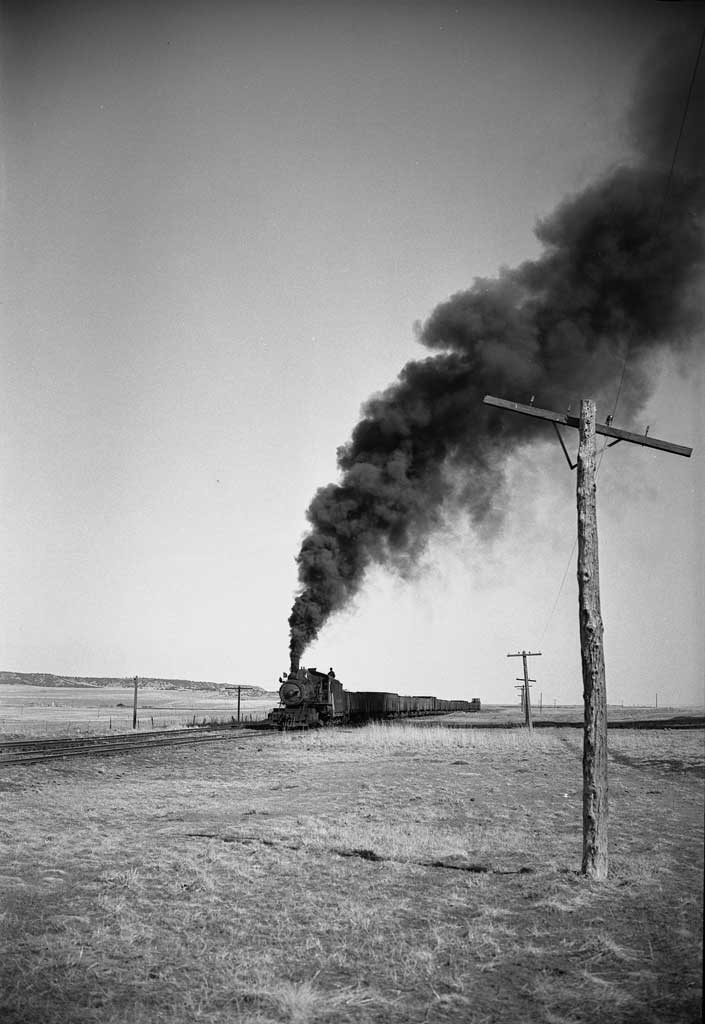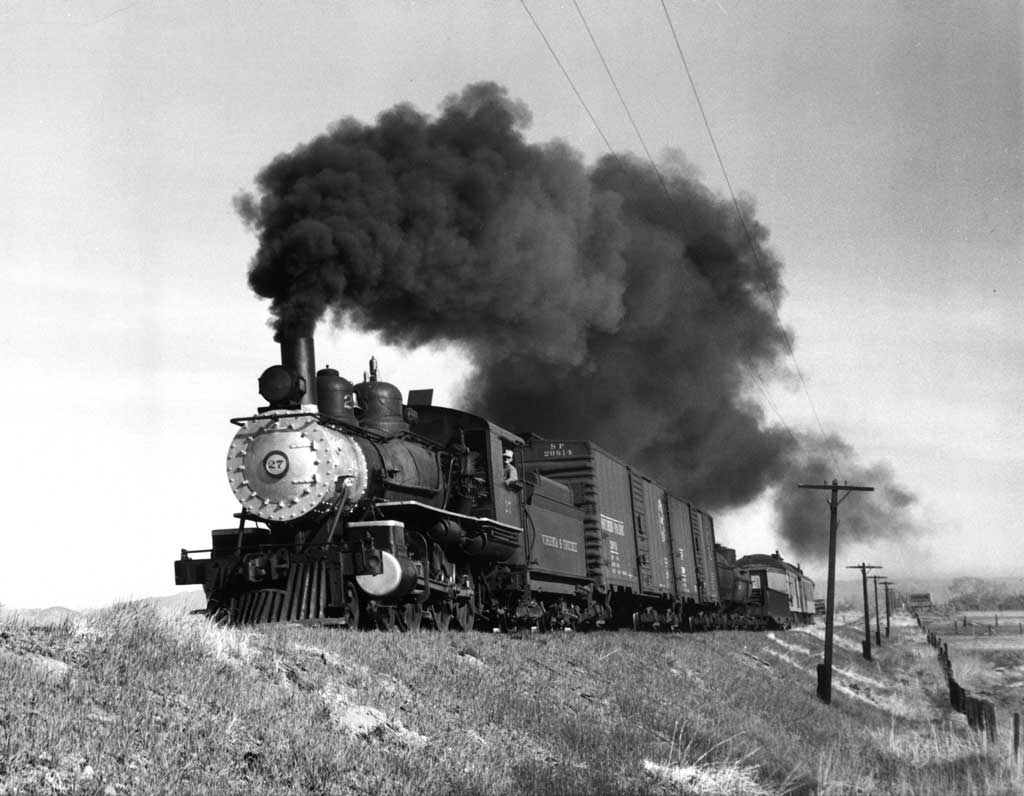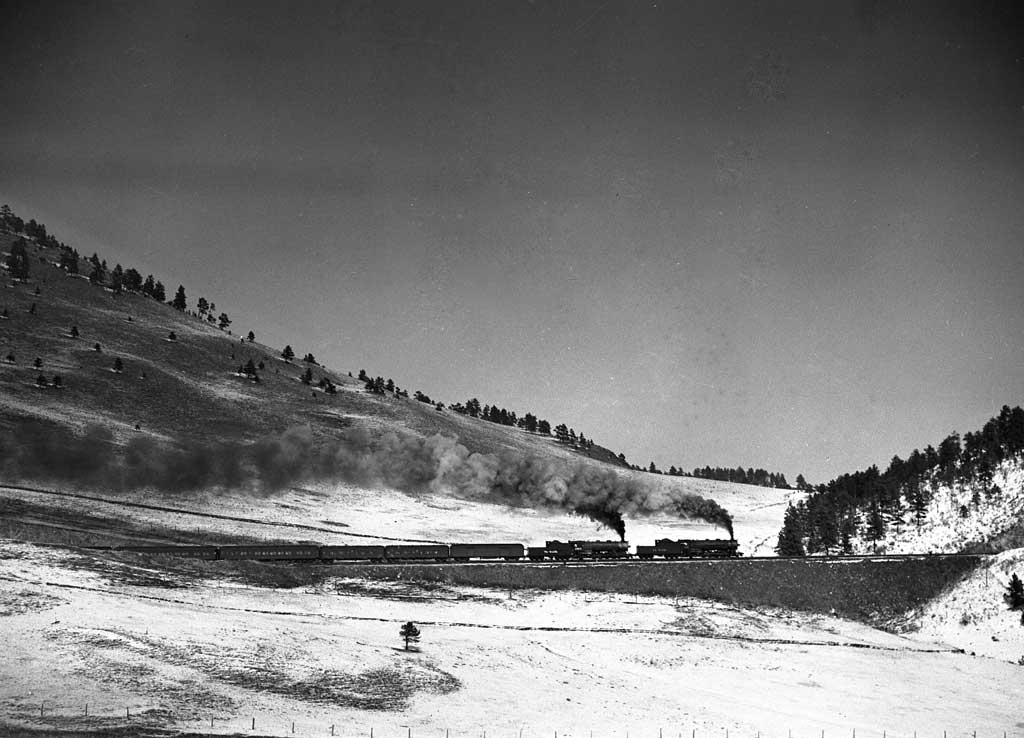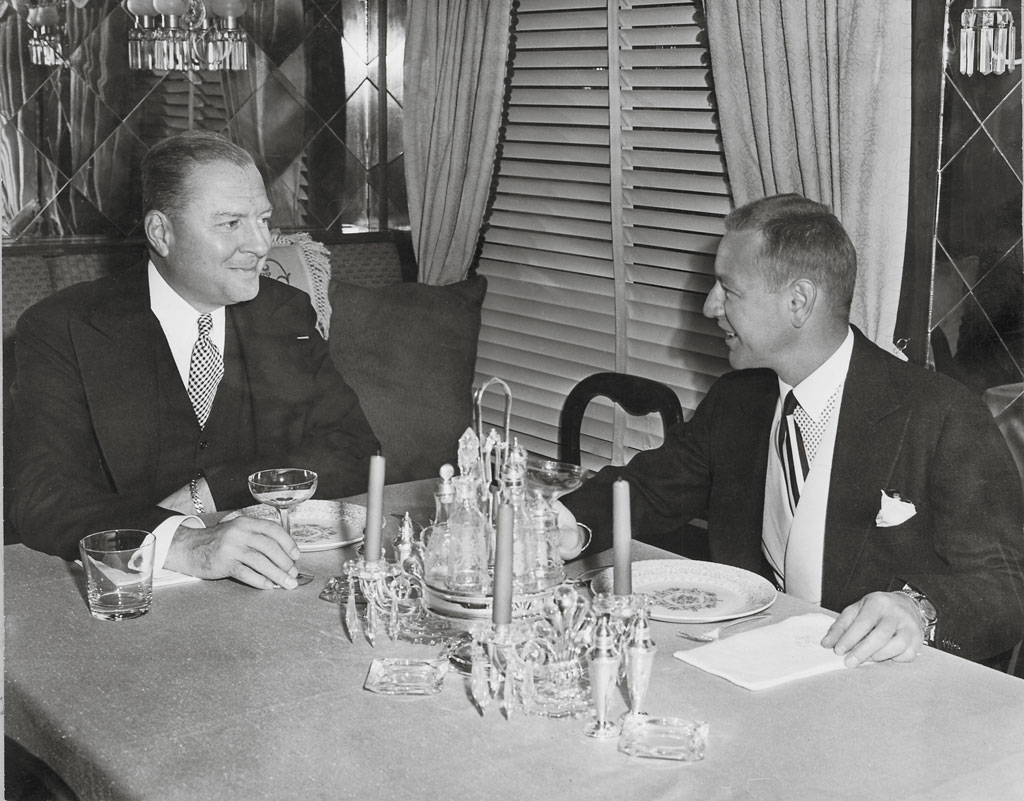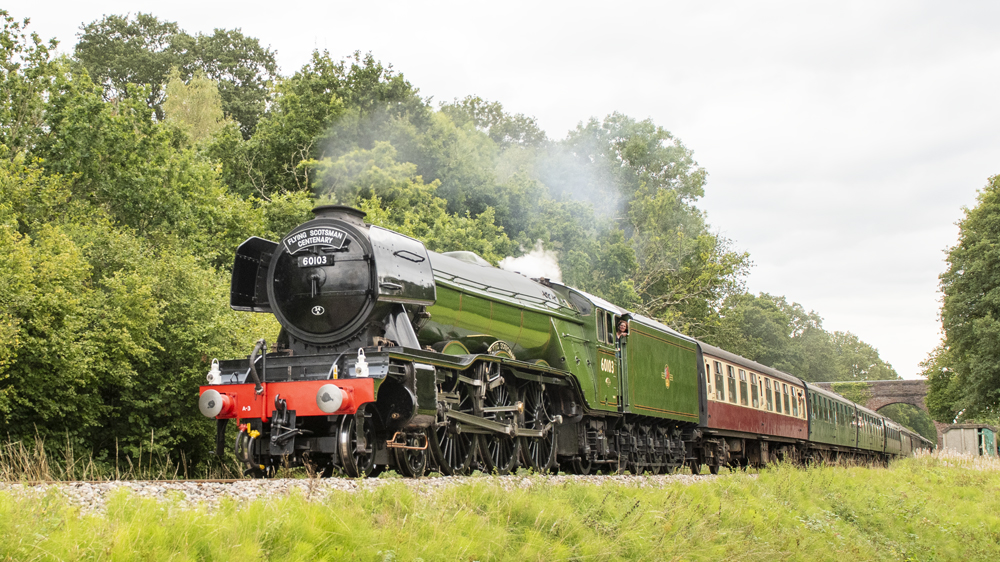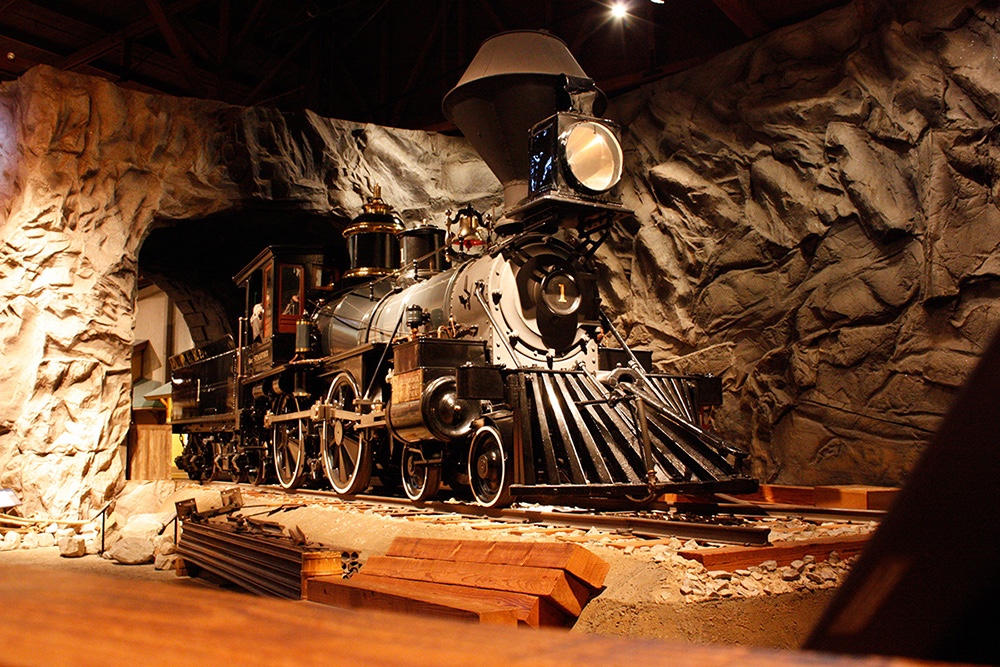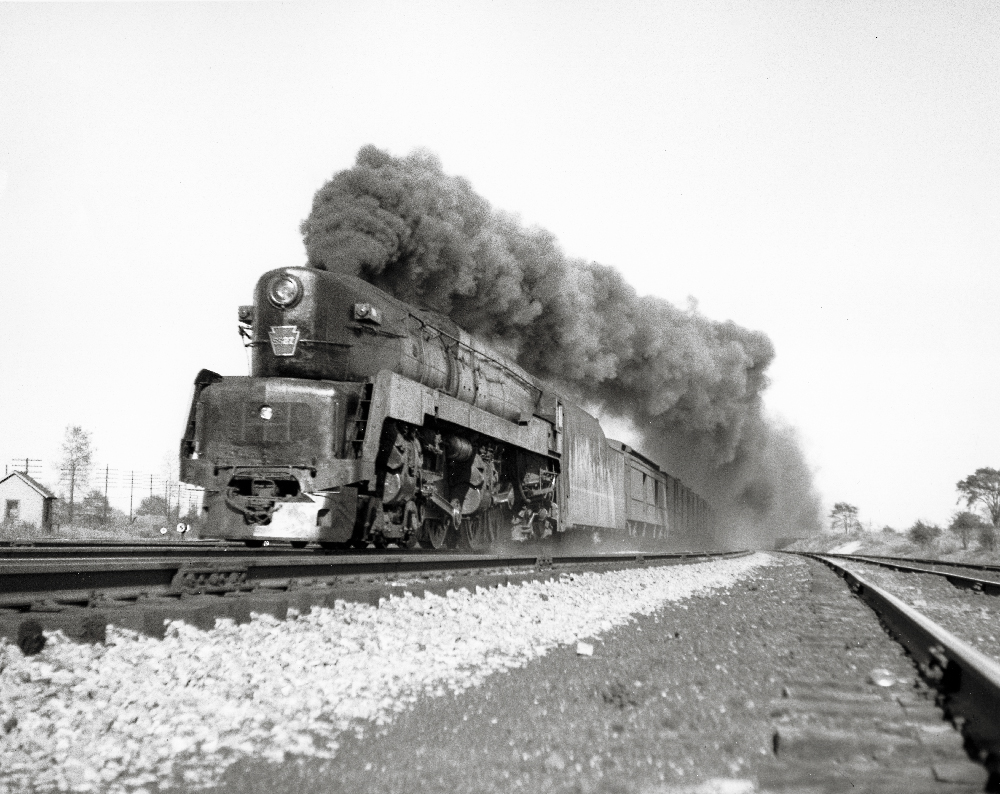He called her “hellish” and “terrible-tempered,” poked fun at her dress and her appearance, and yet she and he conducted regular “devotions of the muse” of alcohol at the McAlpin Hotel bar in New York. One day she suggested he produce a picture book about U.S. railroads. He demurred because of the poor quality of easily available images, and she suggested that he take the pictures himself.
The rest is history—the history of the modern railroad book—today a virtual industry.
His first railroad book, “High Iron” (1938), was a happy success, winning new audiences for railroad photography. Kevin P. Keefe’s article, “Lucius & David” [TRAINS February 2011], tells about the lively correspondence between Beebe and David P. Morgan, then TRAINS editor.
Morgan told Beebe in 1962: “I suppose at heart I’ll never get over the thrill of being an 11-year-old recipient of a copy of “High Iron,” which my Dad purchased for the enormous price (in 1938) of $5. You certainly shook up the book trade then, and happily, still are.”
How did Beebe get started in railroad books and railroad photography?
Beebe sent to work for the New York Herald Tribune in 1929 and wrote a column, “This New York,” beginning in 1933. Mrs. Haskell was the wife of William E. Haskell, assistant to the president at the Herald Tribune. After Mrs. Haskell challenged him to make his own pictures, Beebe bought a 4×5 Graflex and stalked engines and trains.
Beebe took many of the 174 photographs in “High Iron.” Railroad magazine Editor Freeman Hubbard quoted Beebe as saying it was “a crude thing by present-day standards, but it seemed to touch off a lot of other railroad books.” The field was indeed barren. About the only other railroad photo book available in the 1930s was Robert S. Henry’s “Trains” (1934), for children.
Charles M. Clegg Jr. joined Beebe as a companion and business partner in 1941. Together they published about 30 more books and took thousands of pictures of railroads (only a relatively few have been published). While the public knows Beebe and Clegg’s books, now collector’s items, the popularity of their photography is limited to the few published.
Beebe (1902-66) espoused a straightforward, wedge-of-pie perspective, yet encouraged more creative, cutting-edge styles. He advocated Richard Steinheimer, James Shaughnessy, and Robert Hale photography. Clegg (1916-79) brought a different approach to pictures, seeing railroads in landscapes as members of the “pictorial” movement in photography did. The acknowledgments in their books are a who’s who of contemporary photographers.
The four railroad photo books published between 1938 and 1945 made acknowledged experts of Beebe and Clegg. In testimony to their work, Graflex, a camera maker, published a 1946 Commercial Photographer advertisement featuring a Beebe testimonial for the company’s 4-by-5 camera and one of Beebe’s three-quarter Virginia & Truckee views. Beebe and Clegg traveled across the country for three years to search out information and photographs for “Mixed Train Daily,” their most influential book. Life magazine celebrated the book’s publication in 1947, which brought Beebe and Clegg more national attention: “Life Goes to a Party on the Ma and Pa Railroad.”
Magazines and newspapers headlined Beebe’s passing on February 4, 1966. The New York Times described Beebe as “an ornate gentleman, [who] drank deeply of the pleasures of the world, and he loved its velvet comforts.” Time magazine remarked that Beebe “remained wedded only to elegance, which he took to be his taste in dress (top hat and morning suit), food (champagne and paté), railroads (which he glorified in books and his private Pullman), and café society.” TRAINS former Editor Morgan eulogized Beebe as “the man who would enthrall the largest book audience in railroading for more than a quarter of a century.”
In the final accounting, Beebe and Clegg were the right persons at the right time to bring railroad photography to the forefront for enthusiasts and the public alike, which the Center for Railroad Photography & Art acknowledged in “Lucius Beebe and Charles Clegg, Railroading Journeys, A Special Retrospective Devoted to Their Life and Times,” in a 2007 issue of Railroad Heritage magazine. The time is right again for further acknowledgment — railroad heritage is becoming more popular, and new audiences are coming to know Beebe and Clegg’s books, pictures, and contribution to America’s culture.
JOHN GRUBER is a long-time TRAINS contributor, founder and president of the Center for Railroad Photography & Art, and editor of Railroad Heritage. He has been a freelance railroad photographer since 1960, and received a railroad history award from the Railway & Locomotive Historical Society in 1994 for lifetime achievement in photography.





